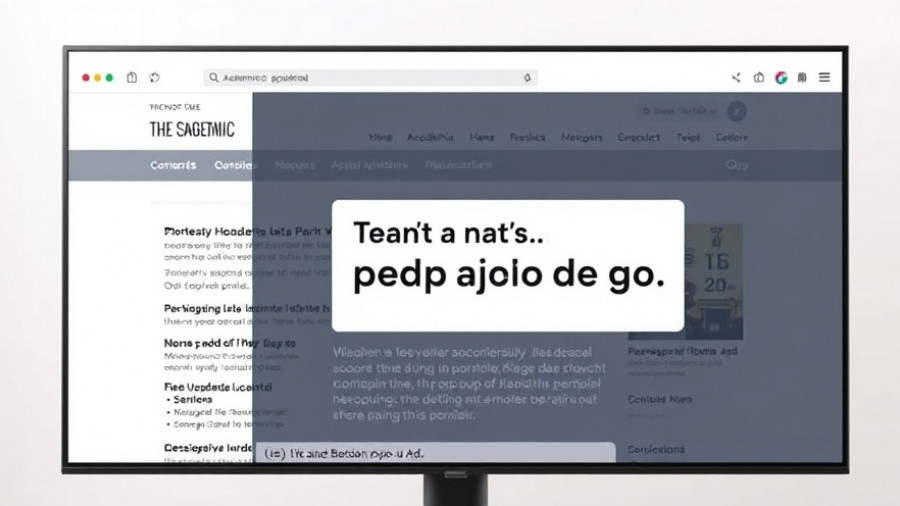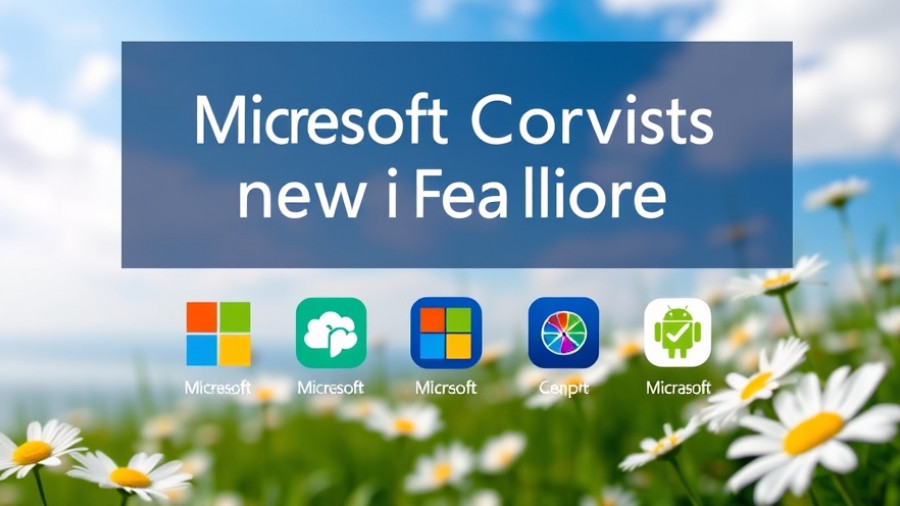
The AI Landscape: Who’s in the Lead and Why?
In the rapidly evolving world of artificial intelligence, several players have emerged, each with unique strengths and growing user bases. While Microsoft's Copilot recently surged past competitors like Google Gemini and OpenAI's ChatGPT in terms of growth rate, it's essential to look deeper at what this growth signifies for users and the future of AI tools.
Understanding the Numbers: Growth Dynamics in AI Chatbots
Recent statistics reveal that Microsoft Copilot's user base increased by a staggering 175% from March to June 2025, becoming the fastest-growing AI chatbot. In comparison, Google’s Gemini enjoyed a growth of 68% while ChatGPT, despite its large user base, grew only by 18%. This growth rate is surprising, especially as ChatGPT maintained the largest user count—36.1 million on desktop and 25.3 million mobile users. So, what drives these trends?
What Sets Copilot Apart?
According to Smriti Sharma, SVP of Custom IQ for Comscore, Copilot's impressive growth can largely be attributed to its deep integration within the Microsoft ecosystem. Users benefit from productivity tools that are natively built into the software they use daily. The mobile-first strategy aligns well with consumers’ need for lightweight productivity solutions, making it an attractive option for on-the-go tasks.
Why ChatGPT Retains Dominance Despite Slower Growth
Despite Copilot's rapid ascent, ChatGPT retains a loyal following, with more than 85% of its mobile users consistently opting to stick with it. This loyalty underscores ChatGPT's early market entry, allowing it to cultivate a robust user base. As Sharma points out, this loyalty is a critical indicator of engagement and suggests that ChatGPT meets users' needs effectively, even as new rivals emerge.
A Comparative Look: Mobile User Behavior
Analyzing user behavior reveals significant differences in engagement levels across these AI platforms. While Copilot users may be more exploratory, often seeking out multiple AI tools, ChatGPT's audience shows intent and commitment. This differentiation in user behavior highlights varying strategies these platforms adopt to retain and attract users.
Future Predictions: Trends as AI Matures
The landscape for AI is not static, and future trends could see shifts in user preferences as technologies evolve. Experts predict that as more users gravitate towards the seamless integration of AI tools into their daily tasks, platforms that prioritize those integrations—like Copilot—could continue to flourish. Furthermore, as competition heats up, innovations in AI functionalities may redefine user experiences across all platforms.
Common Misconceptions: Debunking Myths About AI Growth
Many believe that rapid user growth correlates with quality or efficiency of service. Copilot’s rise, while impressive, does not automatically mean it is superior; it reflects the shifts in user preferences and the changing dynamics of AI interactions. Users often confuse growth with quality, which emphasizes the importance of understanding underlying factors that contribute to these statistics. Each AI platform serves distinct user needs, and choices will widely differ based on individual requirements.
Conclusion: The Ongoing Evolution of AI Tools
The evolution of AI chatbots reflects broader trends in technology and user engagement. While Microsoft Copilot thrives through strategic integration in productivity applications, ChatGPT remains a steadfast choice for many. As the market continues to develop, the battle for user loyalty will likely intensify, pushing all players to innovate and enhance their offerings.
As businesses and individuals reflect on their AI tool choices, understanding these trends can shape their decisions. Staying informed about which platforms are gaining traction will inform users about how to leverage these tools for improved productivity and creativity.
 Add Row
Add Row  Add
Add 




Write A Comment